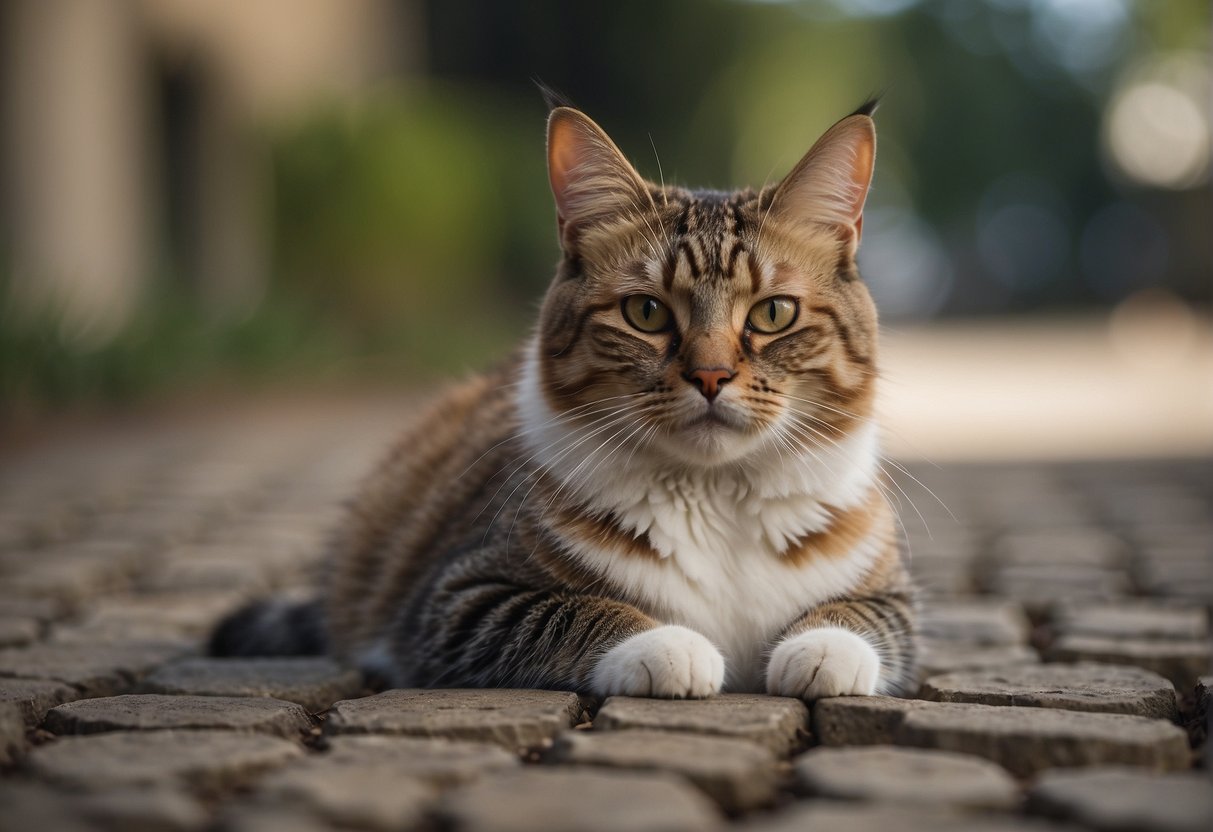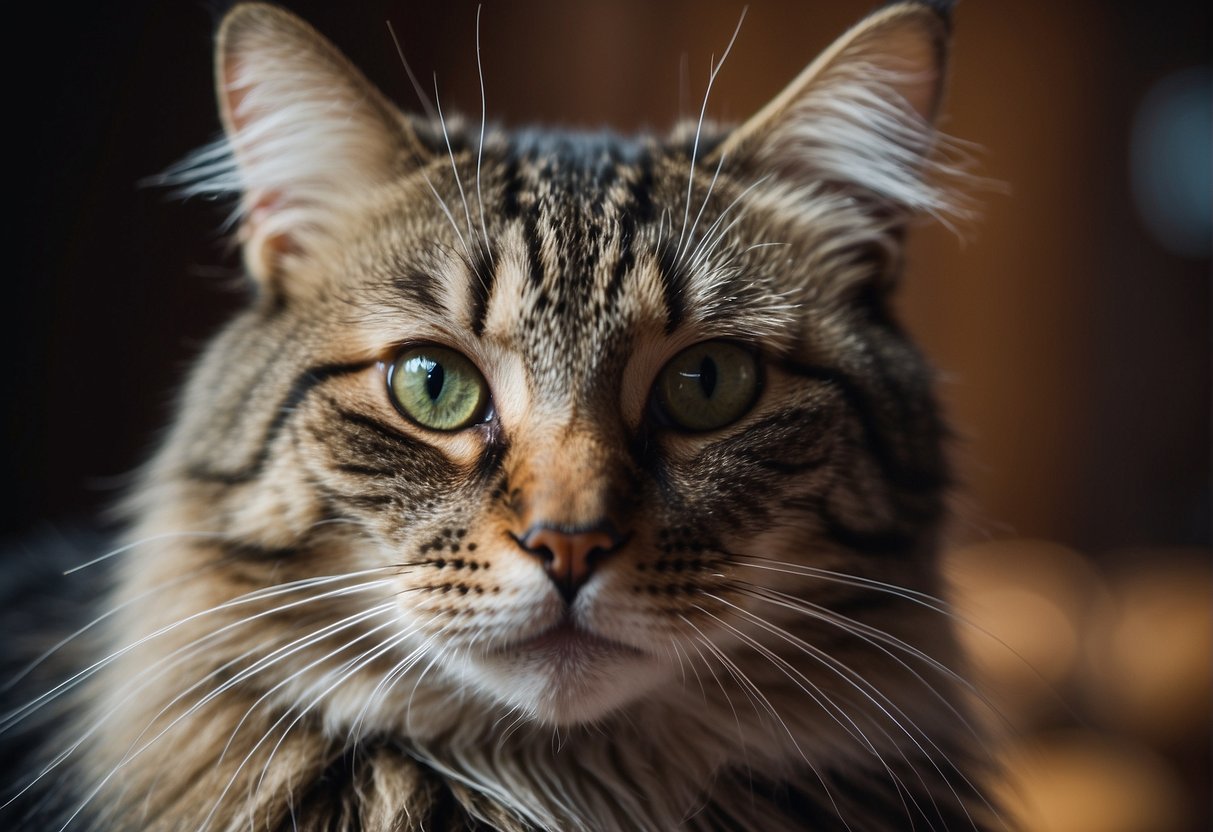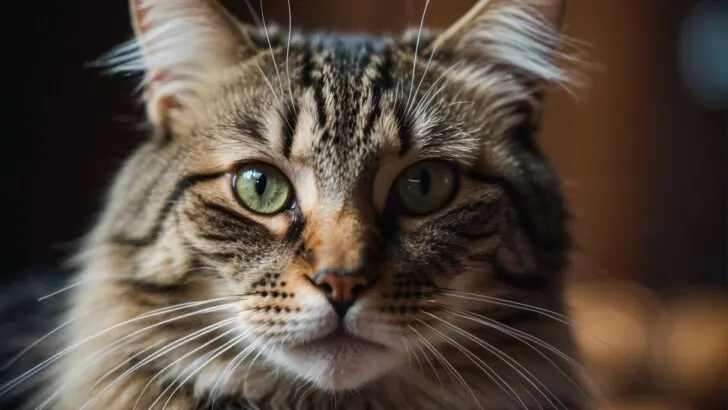Yes, cats do shed their whiskers, but it’s typically not a cause for concern. Much like humans lose hair, a cat’s whiskers will fall out and regrow as part of a natural cycle.
You might occasionally discover a lone whisker on the floor or furniture, which is a normal event for cat owners. Typically, a whisker sheds every few months, ensuring that there are always whiskers at various stages of growth and replacement.

Understanding whisker health is important for cat owners. If you notice your cat losing more whiskers than usual or if there are other signs of distress, it might be worth consulting a vet.
But for the most part, finding shed whiskers around your home simply means your cat’s body is doing its job. Remember, while it’s fascinating to find these long, stiff hairs, it’s crucial to never trim your cat’s whiskers, as they serve as vital sensory tools for navigation and spatial awareness.
When keeping an eye on your cat’s whiskers, observe the little details: their length, thickness, and position can tell you a lot about your cat’s mood and health.
A cat’s whiskers are highly sensitive and can pick up subtle changes in their environment, which is why it’s essential to allow them to shed naturally. So next time you find a whisker, you can appreciate this small token of your cat’s fascinating biology and the gentle, ongoing process that keeps them sharp and attuned to the world around them.
Whiskers and Shedding Explained

Whiskers are not just adorable features on your cat’s face; they play crucial roles in feline wellbeing. Just like fur, they follow a natural growth and shedding cycle that is important for a cat’s sensory navigation.
Whisker Growth Cycle
Whiskers, much like the fur on a cat’s body, go through a growth cycle. They grow, shed, and are replaced periodically. Shedding a few whiskers is a normal part of this cycle, and finding an occasional whisker is common.
Whiskers Function in Cats
Whiskers, or vibrissae, are highly sensitive tactile hairs that provide your cat with crucial sensory input. They help with balance and navigation, allowing your cat to assess their environment, detecting obstacles and even prey.
Factors Influencing Whisker Shedding
The shedding of whiskers can be influenced by factors such as age, breed, and the overall health of your cat. While it’s normal for cats to shed whiskers, the rate at which they do can vary from one cat to another.
Normal vs. Excessive Whisker Shedding
A few shed whiskers here and there is usually not a cause for concern; however, excessive whisker loss could indicate stress or health issues. It’s essential to differentiate between what’s typical for your feline friend and what might warrant a vet visit.
Environmental and Health Factors
Various environmental elements can influence whisker health, including allergies, infections, or stress. Keeping a consistent and comfortable home environment can help prevent excessive shedding.
Grooming and Whisker Care
Though you can’t prevent natural shedding, proper grooming can aid the health of your cat’s whiskers. Opting for water bowls that do not make contact with whiskers, such as wide, shallow dishes, preferably made of ceramic or stainless steel, can help reduce whisker fatigue and stress.
Health Concerns Related to Whiskers
Cats’ whiskers are more than just facial features; they are essential sensory tools.
Common Whisker-Related Health Issues
Your cat may occasionally shed whiskers, which is usually normal, just like regular hair loss. However, excessive shedding or whiskers that appear brittle or broken can indicate stress or a health problem.
Conditions like feline acne, which can cause discomfort and affect whisker health, may be exacerbated by dirty food bowls or environments. Additionally, allergies can lead to increased shedding and whisker damage, manifesting as sneezing, coughing, or red skin.
Indicators of Underlying Health Problems
Whiskers can be early indicators of health issues. If you notice changes in color, texture, or loss of whiskers along with skin lesions or itching, your cat might suffer from bacterial or fungal infections, such as ringworm. Excessive scratching can result in injury to the whisker pads or even lead to secondary infections.
When to Consult a Veterinarian
Make an appointment with your vet if multiple whiskers fall out simultaneously or if whisker loss is combined with other concerning symptoms like hair loss, skin changes, or behavioral changes. These could be signs of a more serious medical issue that needs professional attention.
Preventing Health Issues
Maintaining grooming and cleanliness can go a long way in preventing issues related to your cat’s whiskers. Ensure that your pet has access to clean resources, such as food and water dishes, and keeps up with regular vet check-ups to catch potential problems early.
Tips for Cat Owners
Caring for your cat includes understanding their unique needs, such as monitoring whisker health and ensuring their well-being through their living environment, diet, and stress management. Paying attention to these facets can prevent health issues and ensure your feline friend remains comfortable and happy.
Monitoring Whisker Health
Your cat’s whiskers are a barometer for their health. Each whisker has a root that can inform you about possible health issues.
Regularly check to ensure that whisker loss is not excessive, as this might indicate an underlying issue like a bacterial or fungal infection, or an allergic reaction. Whiskers should shed naturally and regrow in a continuous cycle, but be alert if you notice rapid or substantial whisker loss.
Providing a Whisker-Friendly Environment
Create a space for your cat that’s safe and conducive to their well-being, considering their whiskers’ sensitivity. Keep in mind that whiskers are sensory tools that detect changes in air flow and help in navigation.
Therefore, avoid tight collars and cramped spaces where your cat’s whiskers could be repeatedly bent or broken. During shedding season, maintain a clean environment to limit potential exposure to environmental allergens.
Diet and Whisker Well-Being
Your cat’s diet directly impacts their overall and whisker health. Ensure they are receiving balanced nutrition, which supports the natural shedding and regrowth cycle of whiskers. Inadequate diets can lead to health problems and affect whisker integrity.
Be watchful for signs of food allergies, which can also cause symptoms including poor coat and whisker condition.
Managing Cat Stress Levels
Stress in cats can lead to several health issues, including effects on their whiskers. Stress can sometimes manifest in over-grooming or excessive whisker shedding.
Mitigate stress by maintaining a routine, providing enriching toys and activities, and creating safe, quiet spaces for your cat to retreat to. Recognizing and addressing signs of stress early on is crucial for preventing associated health complications.

My name is James, and welcome to FAQCats!
Along with our team of cat owners, expert pet enthusiasts, and pet professionals, we aim to write engaging helpful, engaging content about cats. At FAQCats we strive to provide content that’s accurate and fun to read. Our team writes about everything related to cats; even the most complex of topics. Through extensive research and caring for our own fur-pals, we’re able to provide something cat owners worldwide will love. Have a look around, and leave us feedback anytime!

